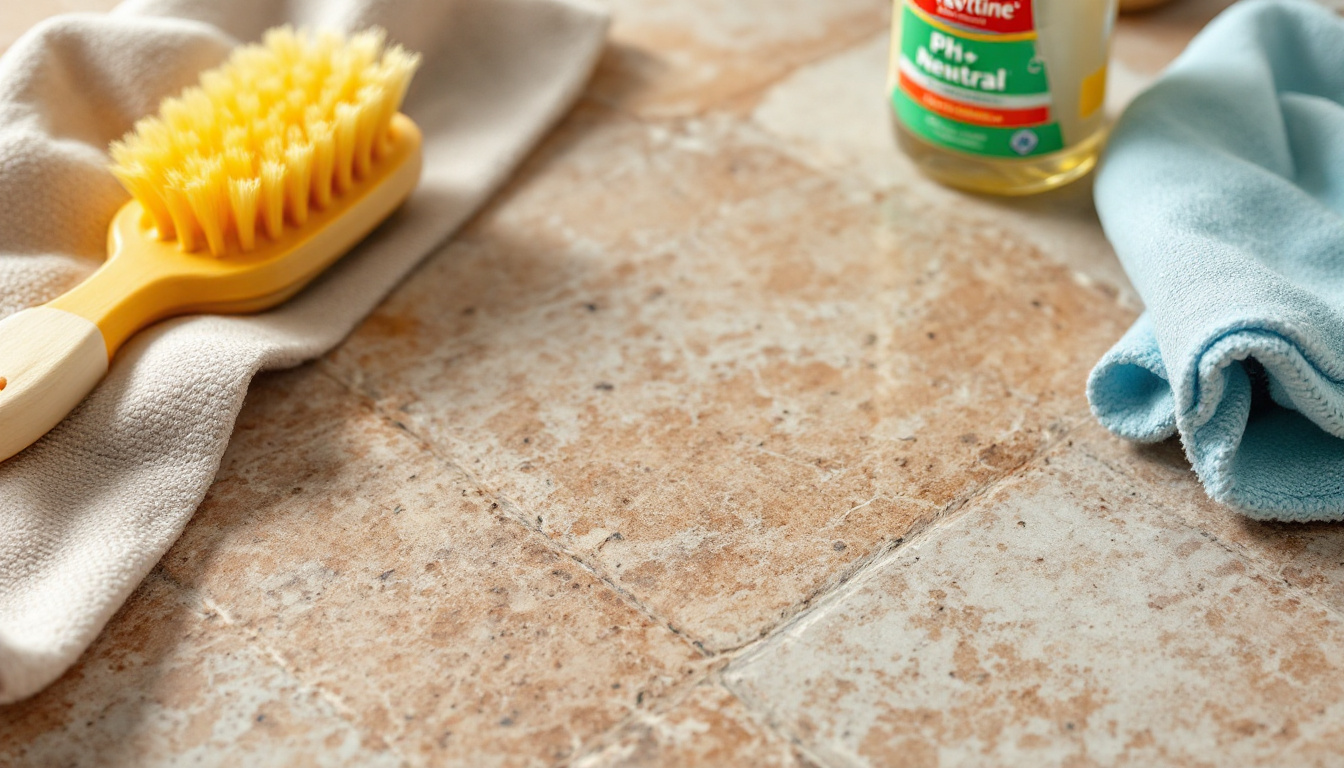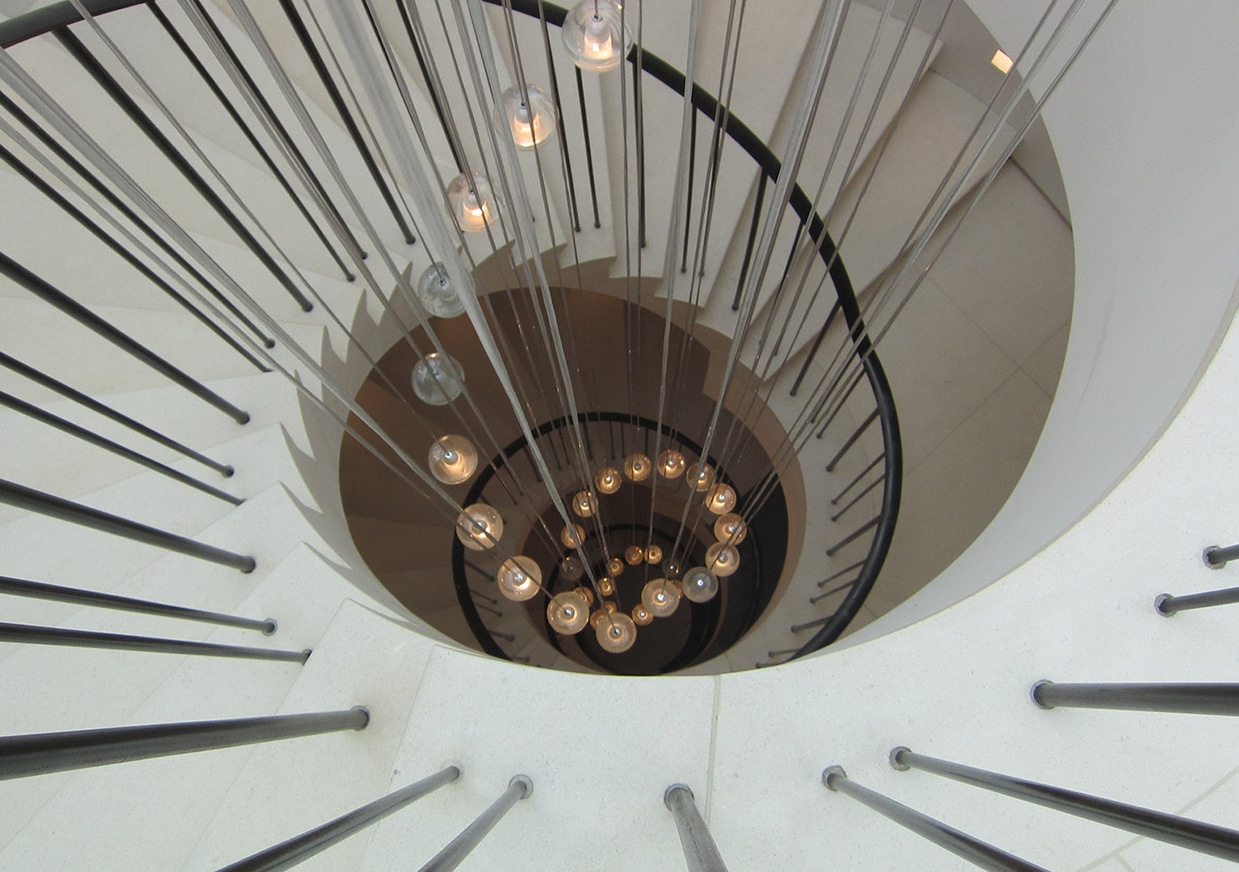
Travertine, a type of limestone deposited by mineral springs, is a popular material for bespoke natural stone interiors. Its unique characteristics, including its warm, earthy tones and distinctive pitted holes and troughs, make it a sought-after choice for architects, designers, and homeowners alike. This article delves into the world of travertine, exploring its origins, properties, uses, and how it can be tailored to create stunning, bespoke interiors.
Despite being a common choice for modern interiors, travertine’s history dates back several millennia. It was a prominent building material in Ancient Rome, used in the construction of some of the city’s most iconic structures, including the Colosseum. Today, it continues to be a popular choice due to its timeless appeal and versatility. Whether you’re looking to create a rustic, traditional look or a sleek, contemporary design, travertine can be the perfect material to bring your vision to life.
Origins and Formation of Travertine
Travertine is a form of limestone, a sedimentary rock composed primarily of calcite. It forms in areas with mineral-rich waters, such as hot springs and limestone caves. When the water evaporates, it leaves behind deposits of calcium carbonate, which over time accumulate and harden to form travertine.
The unique, pitted texture of travertine is a result of the carbon dioxide released during its formation. As the carbon dioxide bubbles up through the mineral-rich water, it creates small holes and troughs in the accumulating calcium carbonate. These distinctive features give travertine its unique, natural look, making it a popular choice for bespoke interiors.
Types of Travertine
There are several types of travertine, each with its own unique characteristics. The most common types include veincut, crosscut, and tumbled travertine. Veincut travertine is cut along the bedding plane, revealing the layered veining of the stone. Crosscut travertine, on the other hand, is cut across the bedding plane, resulting in a more cloud-like pattern. Tumbled travertine is processed to give it a more weathered, rustic look.
Each type of travertine has its own unique aesthetic and can be used to create different looks and feels within an interior space. For instance, veincut travertine can create a sleek, modern look, while tumbled travertine is perfect for creating a more rustic, traditional feel.
Properties of Travertine
Travertine is known for its durability and longevity. It’s a hard, dense stone that can withstand heavy use and wear, making it a popular choice for high-traffic areas such as hallways and kitchens. Despite its hardness, travertine is also relatively easy to work with, allowing for a wide range of bespoke designs and applications.
One of the most distinctive properties of travertine is its pitted surface. These pits and troughs can be filled for a smoother surface, or left unfilled for a more natural, textured look. The choice between filled and unfilled travertine will depend on the desired aesthetic and practical considerations such as cleaning and maintenance.
Color Variations
Travertine comes in a range of earthy tones, from pale cream and beige to rich gold and brown. The color of the stone is determined by the minerals present during its formation. For instance, iron compounds can give the stone a reddish or yellowish hue, while organic matter can result in darker shades of brown.
These natural color variations add to the unique appeal of travertine. No two pieces are exactly alike, allowing for truly bespoke designs. Whether you’re looking for a subtle, neutral palette or a bold, dramatic statement, travertine offers a wide range of options to suit your design needs.
Uses of Travertine in Interiors
Travertine’s versatility makes it suitable for a wide range of interior applications. It’s commonly used for flooring, wall cladding, countertops, and backsplashes. Its natural beauty and warmth can add a touch of elegance and sophistication to any space.
Travertine’s durability and ease of maintenance also make it a practical choice for interiors. It’s resistant to heat and scratches, making it ideal for kitchen countertops and fireplace surrounds. Its natural slip resistance also makes it a safe choice for flooring, particularly in wet areas such as bathrooms.
Flooring
Travertine flooring is a popular choice for both residential and commercial interiors. Its natural beauty, durability, and slip resistance make it an ideal choice for high-traffic areas. It can be cut and finished in a variety of ways to suit any design style, from rustic to contemporary.
When choosing travertine for flooring, it’s important to consider the finish. Polished travertine has a glossy, reflective surface that can add a touch of elegance to any space. Honed travertine, on the other hand, has a matte finish that provides a more natural, understated look. Tumbled travertine has a textured surface that adds character and slip resistance, making it a great choice for areas such as kitchens and bathrooms.
Wall Cladding
Travertine is also a popular choice for wall cladding. Its natural beauty and warmth can add depth and character to any space. Whether used as a feature wall in a living room or as a backsplash in a kitchen, travertine can create a stunning visual impact.
When used for wall cladding, travertine can be cut and finished in a variety of ways to create different looks. For instance, veincut travertine can create a sleek, modern look, while tumbled travertine can add a rustic, traditional feel. The choice of finish will depend on the desired aesthetic and the overall design of the space.
Creating Bespoke Interiors with Travertine
One of the key advantages of travertine is its versatility. It can be cut, shaped, and finished in a variety of ways to create truly bespoke interiors. Whether you’re looking to create a sleek, modern design or a rustic, traditional look, travertine can be tailored to suit your needs.
When designing with travertine, it’s important to consider the overall design of the space. The color, finish, and layout of the travertine should complement the other elements in the space, such as the furniture, fixtures, and lighting. By carefully considering these factors, you can create a cohesive, harmonious design that enhances the natural beauty of the travertine.
Choosing the Right Travertine
Choosing the right travertine for your project can be a complex process. It involves considering a range of factors, including the color, finish, and type of travertine, as well as the overall design of the space. It’s important to choose a travertine that not only meets your aesthetic preferences, but also your practical needs.
When choosing travertine, it’s also important to consider the source. High-quality travertine comes from reputable quarries that adhere to sustainable practices. By choosing responsibly sourced travertine, you can ensure that your project is not only beautiful, but also environmentally responsible.
Working with a Stone Specialist
Creating bespoke interiors with travertine requires a high level of skill and expertise. It’s therefore recommended to work with a stone specialist who can guide you through the process. A stone specialist can help you choose the right travertine for your project, provide advice on design and installation, and ensure that the finished result meets your expectations.
Working with a stone specialist can also ensure that your project is completed to a high standard of quality. They can provide expert craftsmanship and attention to detail, ensuring that every piece of travertine is cut and finished to perfection. Whether you’re creating a simple backsplash or a complex floor design, a stone specialist can help you achieve your vision.
Maintenance and Care of Travertine
While travertine is a durable and hard-wearing material, it does require some care to maintain its beauty and longevity. Regular cleaning and sealing can help protect the stone from stains and damage, and ensure that it continues to look its best for many years to come.
Travertine should be cleaned with a soft, damp cloth and a mild, pH-neutral cleaner. Harsh chemicals and abrasive cleaners should be avoided, as they can damage the surface of the stone. Spills should be wiped up immediately to prevent staining, particularly on unsealed or light-colored travertine.
Sealing Travertine
Sealing is an important part of maintaining travertine. A good quality sealer can protect the stone from stains and damage, and enhance its natural beauty. It’s recommended to seal travertine at least once a year, or more often in high-traffic areas or areas exposed to water, such as kitchens and bathrooms.
When sealing travertine, it’s important to choose a sealer that is suitable for natural stone. The sealer should be applied evenly and allowed to dry completely before the stone is used. It’s also important to test the sealer on a small, inconspicuous area first to ensure that it doesn’t alter the color or finish of the stone.
Repairing Travertine
Despite its durability, travertine can sometimes chip or crack. Fortunately, most minor damage can be repaired with a stone repair kit. For more serious damage, it may be necessary to replace the damaged piece of travertine. A stone specialist can provide advice on the best course of action, and carry out the repair or replacement if necessary.
With proper care and maintenance, travertine can remain beautiful and durable for many years. Its timeless appeal and versatility make it a worthwhile investment for any interior design project.
Conclusion
Travertine is a versatile and beautiful material that can add a touch of elegance and sophistication to any interior space. Its unique characteristics, including its warm, earthy tones and distinctive pitted texture, make it a sought-after choice for bespoke natural stone interiors.
Whether you’re looking to create a rustic, traditional look or a sleek, contemporary design, travertine can be the perfect material to bring your vision to life. By understanding its origins, properties, and uses, and working with a skilled stone specialist, you can create truly bespoke interiors that enhance the natural beauty of this timeless stone.
Bring Your Travertine Vision to Life with AF Jones Stonemasons
Ready to elevate your space with the timeless elegance of travertine? At AF Jones Stonemasons, we blend centuries of craftsmanship with cutting-edge technology to create bespoke natural stone interiors that truly reflect your vision. From concept to installation, our knowledgeable team is dedicated to realizing the potential of stone in your project, no matter the scale. Visit our showroom in the rolling hills of Oxfordshire, or make an enquiry today to start your journey towards a stunning travertine masterpiece.


